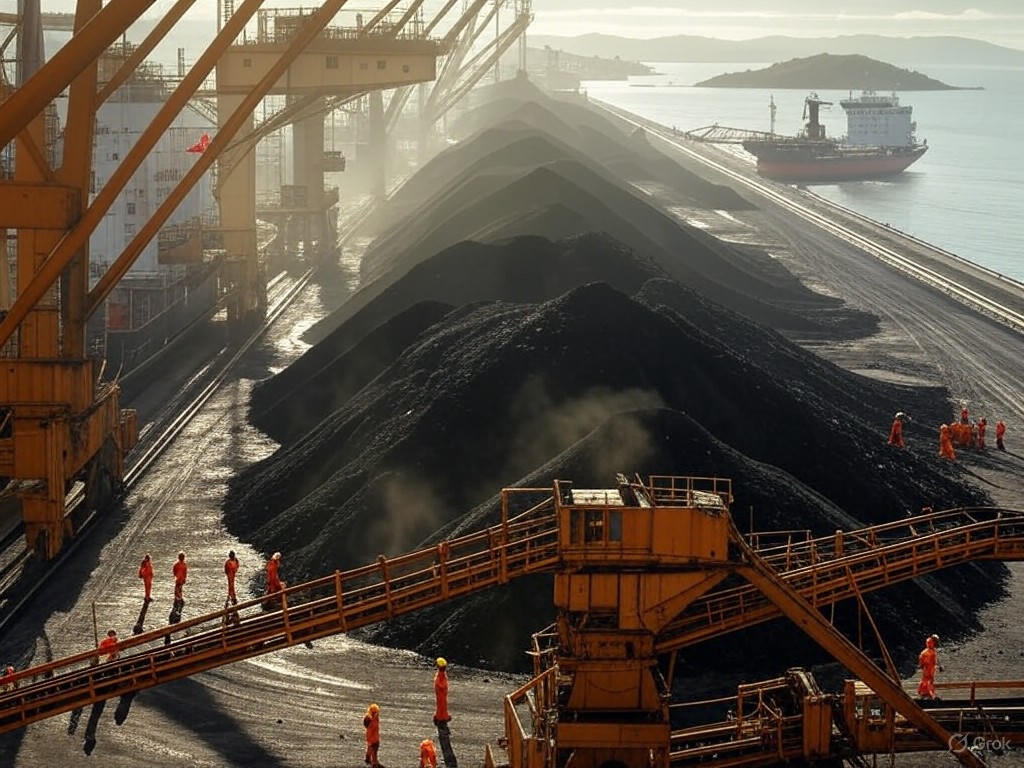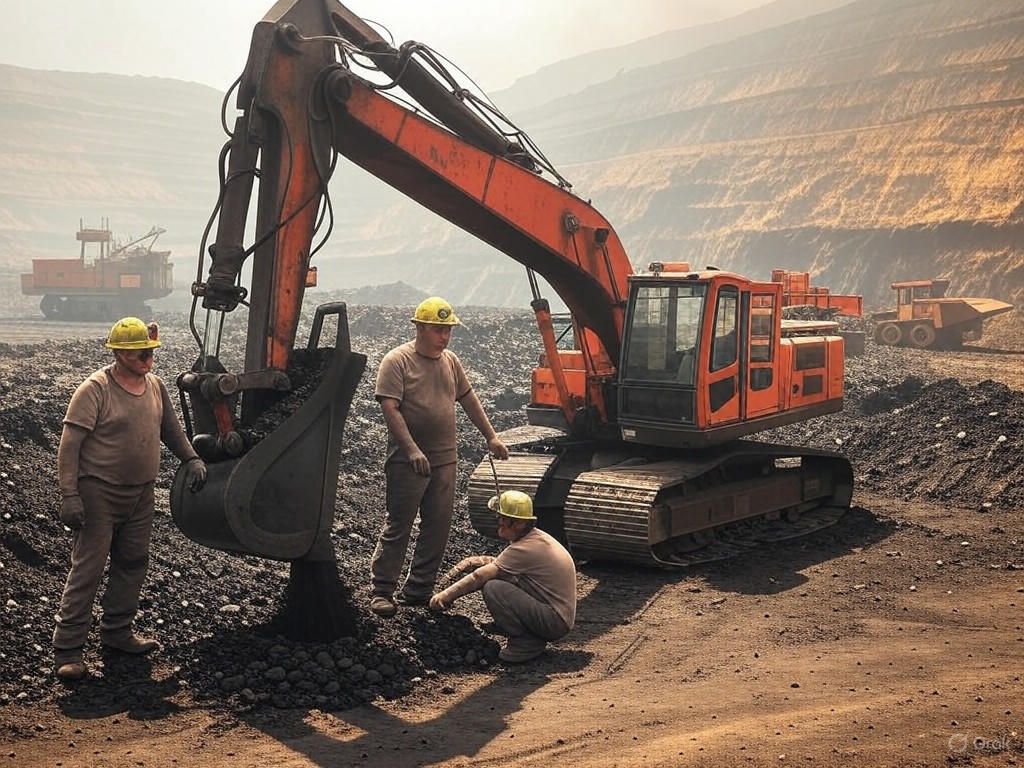Australia’s Coal Exports: Asia’s Energy vs. Climate Goals
In the vast expanses of Queensland’s coalfields, where the earth yields its ancient treasures to power modern ambitions, Australia finds itself at a crossroads. As one of the world’s leading exporters of coal, the nation has long thrived on the steady demand from Asia’s burgeoning economies. Yet, this economic boon collides headlong with the imperative of global climate commitments, igniting fierce policy debates that question the role of fossil fuels in an era of environmental stewardship. From the humming ports of Newcastle to the diplomatic halls of international summits, the tension between energy security and ecological responsibility underscores a broader narrative: how can nations navigate these challenges without succumbing to overly prescriptive government interventions? As I reflect on this issue, inspired by the deliberate introspection of Thoreau’s essays, it becomes clear that practical, market-oriented solutions offer the most viable path forward.
Australia’s coal exports, particularly to energy-hungry nations like China and India, represent a cornerstone of its economy. In 2023 alone, these shipments accounted for over $50 billion in revenue, sustaining jobs in mining communities and bolstering trade balances. This dynamic is not merely transactional; it reflects a pragmatic response to Asia’s insatiable energy demands, where coal remains a reliable and affordable source for powering factories, homes, and infrastructure. However, this reliance clashes with the global push for decarbonization, as embodied in agreements like the Paris Accord. Australia, as a signatory, has pledged to reduce emissions by 43% below 2005 levels by 2030, yet its coal industry continues to undermine these goals. The debate, therefore, centers on whether to prioritize short-term economic stability or long-term environmental sustainability—a question that, from a center-right lens, demands a balanced approach rooted in free-market innovation rather than heavy-handed regulation.
The Economic Engine and Its Environmental Shadow
At the heart of Australia’s coal narrative is its role as Asia’s energy lifeline. Countries like Japan and South Korea, facing their own energy shortages, depend on Australian coal to maintain industrial output and ensure reliable electricity grids. This interdependence highlights the free market’s efficiency: coal exports have flourished not through subsidies or mandates but through competitive global trade. According to a Wall Street Journal analysis, Australia’s coal sector has adapted to market signals, with investments in higher-efficiency mining techniques that reduce waste and emissions per ton exported. Such adaptations underscore traditional values of resourcefulness and self-reliance, where industries evolve organically rather than being reshaped by bureaucratic fiat.
Yet, this economic vitality casts a long shadow on climate change efforts. Coal combustion remains a primary driver of greenhouse gas emissions, contributing roughly 25% of global CO2 output. In Australia, exports to Asia exacerbate this, as imported coal powers coal-fired plants that defy international emission targets. Policymakers in Canberra face mounting pressure to align with global standards, but from a center-right perspective, the focus should be on empowering private innovation rather than imposing top-down restrictions. For instance, rather than mandating rapid phase-outs that could devastate mining towns, governments might incentivize voluntary transitions through tax credits for clean technologies. This approach respects the market’s ability to allocate resources efficiently while honoring the traditional ethos of individual enterprise.

Coal ships queue at Newcastle's export terminal, symbolizing Australia's pivotal role in supplying Asia's energy needs amid growing environmental scrutiny.
Evidence of the Clash: Data, Debates, and Market Dynamics
The evidence for Australia’s coal conundrum is compelling and multifaceted. Data from the International Energy Agency (IEA report on global coal trends) reveals that while global coal demand peaked in 2023, Asia’s consumption continues to rise, driven by economic growth and energy poverty in regions like India. Australia, exporting over 200 million tons annually, benefits from this surge, but at what cost? Studies show that these exports contribute to approximately 1% of global emissions, a figure that, while relatively small, amplifies when considering the cumulative impact on rising sea levels and extreme weather events.
Policy debates in Australia reflect this tension. Conservative voices argue that abrupt curbs on coal exports would erode national sovereignty and economic freedom, potentially leading to job losses in rural areas where mining sustains communities. A Financial Times piece on Australia’s energy policy highlights how free-market advocates propose carbon pricing mechanisms—such as Australia’s existing emissions trading scheme—as a way to internalize environmental costs without government overreach. This mechanism allows businesses to innovate, perhaps by investing in carbon capture technologies, rather than facing outright bans that could stifle growth.
Conversely, environmental advocates point to the risks of inaction, citing examples like the 2019-2020 Australian bushfires, which were exacerbated by climate patterns linked to fossil fuel emissions. Yet, a center-right view cautions against alarmism, emphasizing that solutions should emerge from practical, market-based incentives. For instance, partnerships between Australian miners and Asian utilities could accelerate the adoption of cleaner coal technologies, as evidenced by a World Coal Association study. By fostering such collaborations, Australia can maintain its export strength while gradually shifting toward sustainable energy sources, all without the pitfalls of excessive regulation.

Miners in Queensland extract coal, illustrating the industry's economic importance and the human element in Australia's energy export story.
Toward Practical Resolutions
In conclusion, Australia’s coal industry embodies a profound challenge: how to reconcile the immediate demands of energy security with the long-term imperatives of climate stewardship. Through a center-right prism, the answer lies not in expansive government mandates but in harnessing the free market’s ingenuity. By encouraging voluntary innovations, such as advanced clean-coal technologies and diversified energy portfolios, Australia can continue to support Asia’s growth while contributing to global emission reductions. This approach aligns with traditional values of fiscal responsibility and individual initiative, ensuring that economic vitality does not come at the expense of environmental prudence.
Ultimately, as Thoreau might have urged, we must reflect deliberately on our choices, seeking solutions that are both practical and principled. For Australia, this means viewing coal not as an anachronism but as a bridge to a more sustainable future—one built on market dynamics rather than ideological dictates. As the world watches, the decisions made in Canberra could set a precedent for balancing progress with preservation, reminding us that true advancement comes from thoughtful, self-reliant action.

